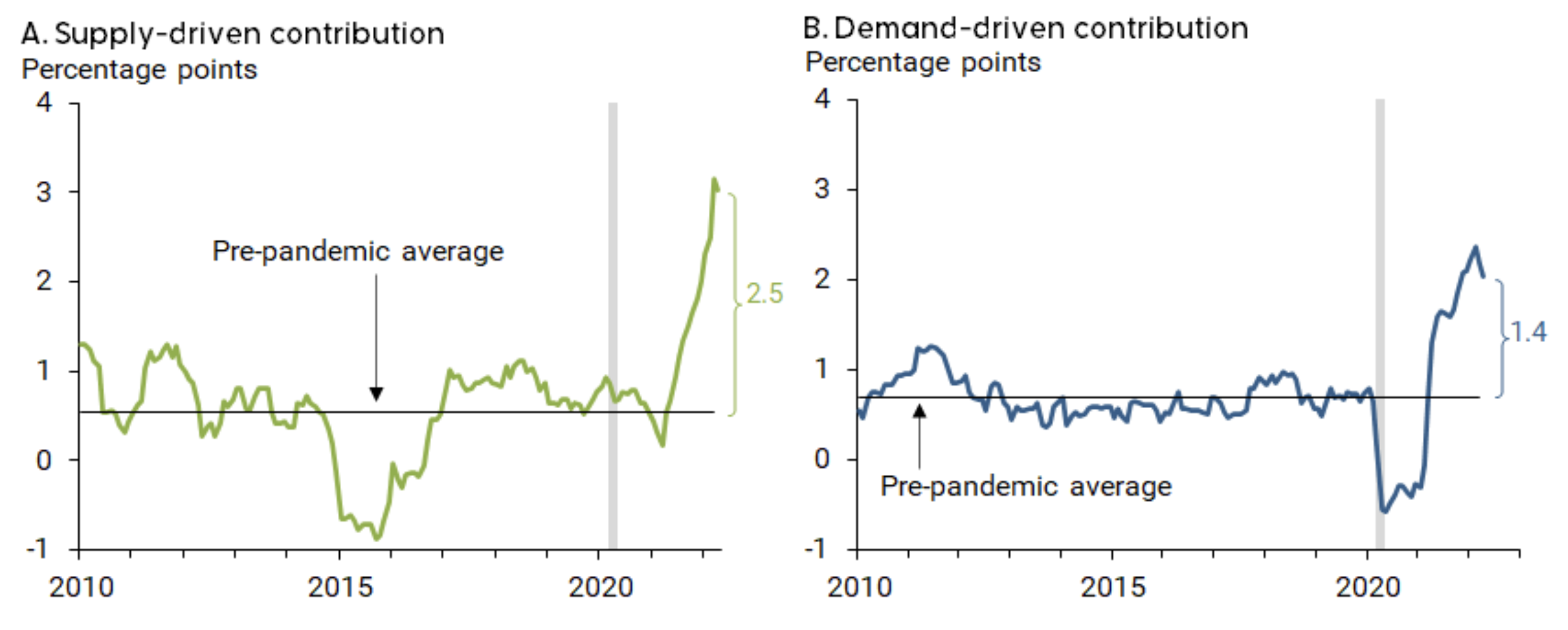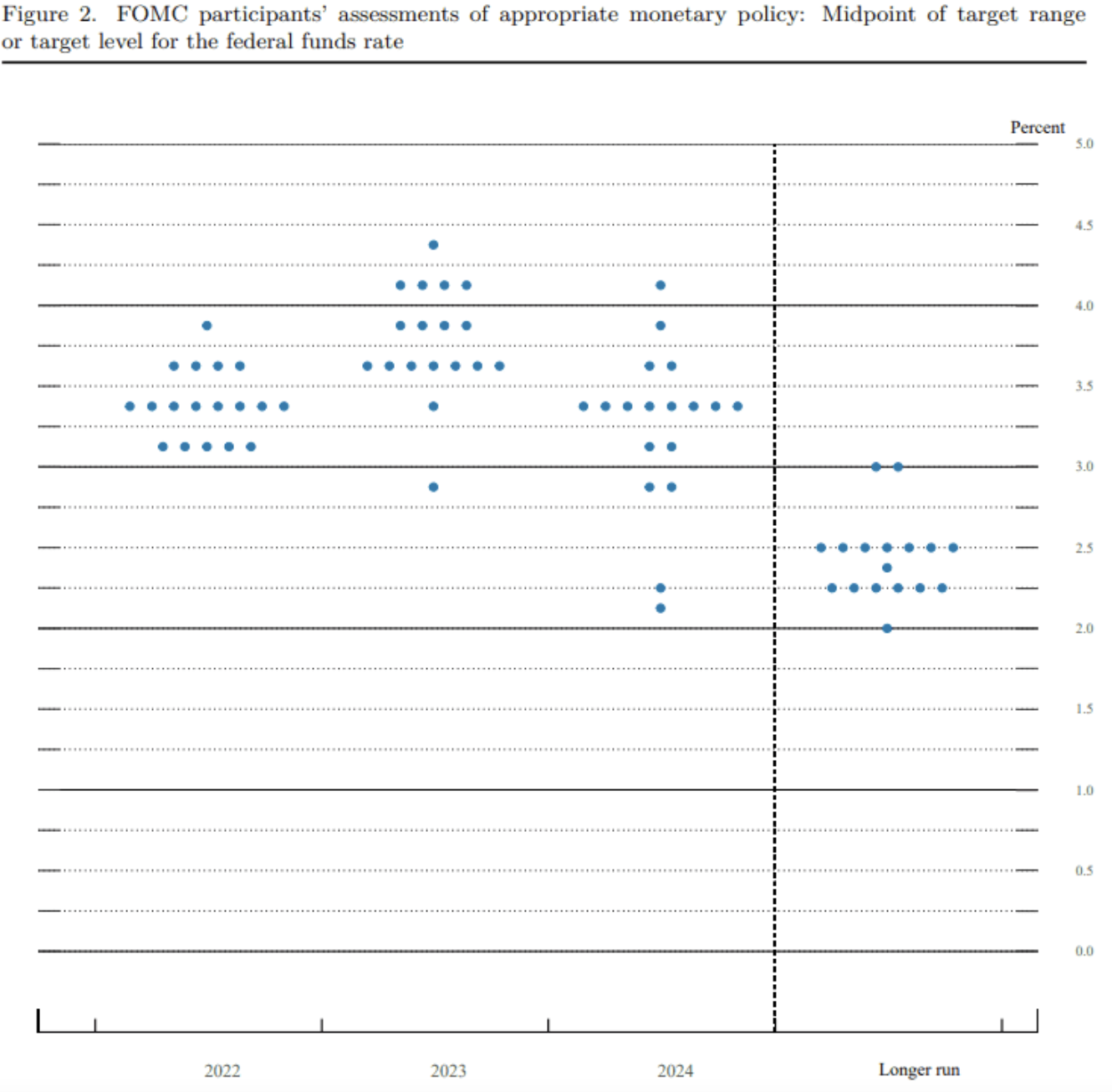1 in 10 chance Jerome Powell can salvage a soft landing
Rate hikes are an exceptionally blunt, roundabout way to kill today's inflation. US Federal Reserve chair Jerome Powell acknowledged as much in his address to Congress this week. But he's doing it anyway.
In this wire, I'll leverage off Powell's address to explore the nature of today's inflation, how monetary policy is ill-equiped to deal with it, how difficult soft landings are to achieve, and why one is highly unlikely this time around.
Blunt instruments cause collateral damage
So much of the inflation we see today is cost-push rather than demand-pull inflation.
It doesn't take much to see where a lot of it has come from recently. The world's largest exporter of oil invades the world's fifth largest exporter of wheat, while the world's largest exporter of goods continues to go into COVID lockdown. Ipso facto, the prices of energy, food, and just about everything else skyrocket.

"Supply factors explain about half of the difference between current 12-month PCE inflation and pre-pandemic inflation levels, and the effects appear to be rising more recently," notes Adam Hale Shapiro, an economist at the San Francisco Fed, in a letter published Tuesday by the Federal Reserve Bank of San Francisco.
"Demand factors are responsible for about a third of the difference, and those effects appear to be diminishing more recently."
Killing inflation that's spiking on the supply side by taking action on the demand side will eventually work, but at the expense of the economy writ large. It's akin to putting out a forrest fire by blowing up the dam wall. The fire will be put out, but all the villages will be washed away too.
"At the Fed, we understand the hardship high inflation is causing. We are strongly committed to bringing inflation back down, and we are moving expeditiously to do so," Powell told the Senate Banking Committee.
"We have both the tools we need and the resolve it will take to restore price stability on behalf of American families and businesses."
The use of the plural word "Tools" is clearly a bit of central banker wordplay to reassure the market. Quantitative tightening does aim to lower inflation, but only on the margins. The funds rate is the the main tool in the belt we're talking about in the context of bringing down inflation. But I digress.
He went on:
“I would never take something off the table for any and all purposes... The committee that I chair will make any moves that are appropriate to restore price stability.”
What's on the table?
How long is a piece of string?
"A 75-basis-point increase is not something the committee is actively considering," Powell said last month.
He scrapped that thought and lifted the federal funds rate by 0.75% at the Fed's June meeting, bringing it to 1.5%.
Then, yesterday, he stated that 0.75% is on the table. Pressed on whether 1% is on the table, he replied: “I’ll just say we’re going to react to the incoming data appropriately, so I wouldn’t want to put a number on what that might be.”
You can find Powell's prepared statement to the Senate Banking Committee here.

The famed dot plot above shows where the Federal Open Market Committee members reckon rates will be at different intervals.
The median dot on the dot plot has the fed funds rate at 3.4% by the end of the year.
In terms of the entire tightening cycle, US futures are currently pricing in a terminal rate of 3.9% in mid-2023.
Is a soft landing wishful-thinking?
Powell has previously said that the US Fed has managed three soft landings in the last 60 years: 1965, 1984 and 1994.
That's a very kind reading of history.
"Arguably the only time the Fed has been successful in achieving a soft landing occurred in 1994-1995 when the Fed doubled interest rates to 6% and was able to slow economic growth without triggering a recession," Harvard economists Alex Domash and Lawrence Summers explain in this paper.
"But with inflation nearing 8 percent and unemployment below 4 percent, the Fed today is way behind the curve, and now has to play catch-up to try to tame price increases. The historical evidence indicates that when inflation is as high as it is today, and the unemployment rate is as low as it is today, the probability of a recession over the next one and two years is extraordinarily high."
The New York Fed, for its part, puts a soft landing this time round at one in ten. Not good odds.
“According to the model, the probability of a soft landing -- defined as four-quarter GDP growth staying positive over the next ten quarters -- is only about 10%,” its economists wrote in a blog post last week.
“Conversely, the chances of a hard landing -- defined to include at least one quarter in the next ten in which four-quarter GDP growth dips below -1%, as occurred during the 1990 recession -- are about 80%.”
Asked yesterday whether a soft landing is possible, Powell responded:
"It is our goal, [but] it is going to be very challenging. It has been made significantly more challenging by the events of the last few months thinking of the war and commodities prices and further problems with supply chains."
Translated: no, it's not possible.
Never miss an insight
Enjoy this wire? Hit the ‘like’ button to let us know. Stay up to date with content like this by hitting the ‘follow’ button below and you’ll be notified every time we post a wire.
Not already a Livewire member? Sign up today to get free access to investment ideas and strategies from Australia’s leading investors.
3 topics

